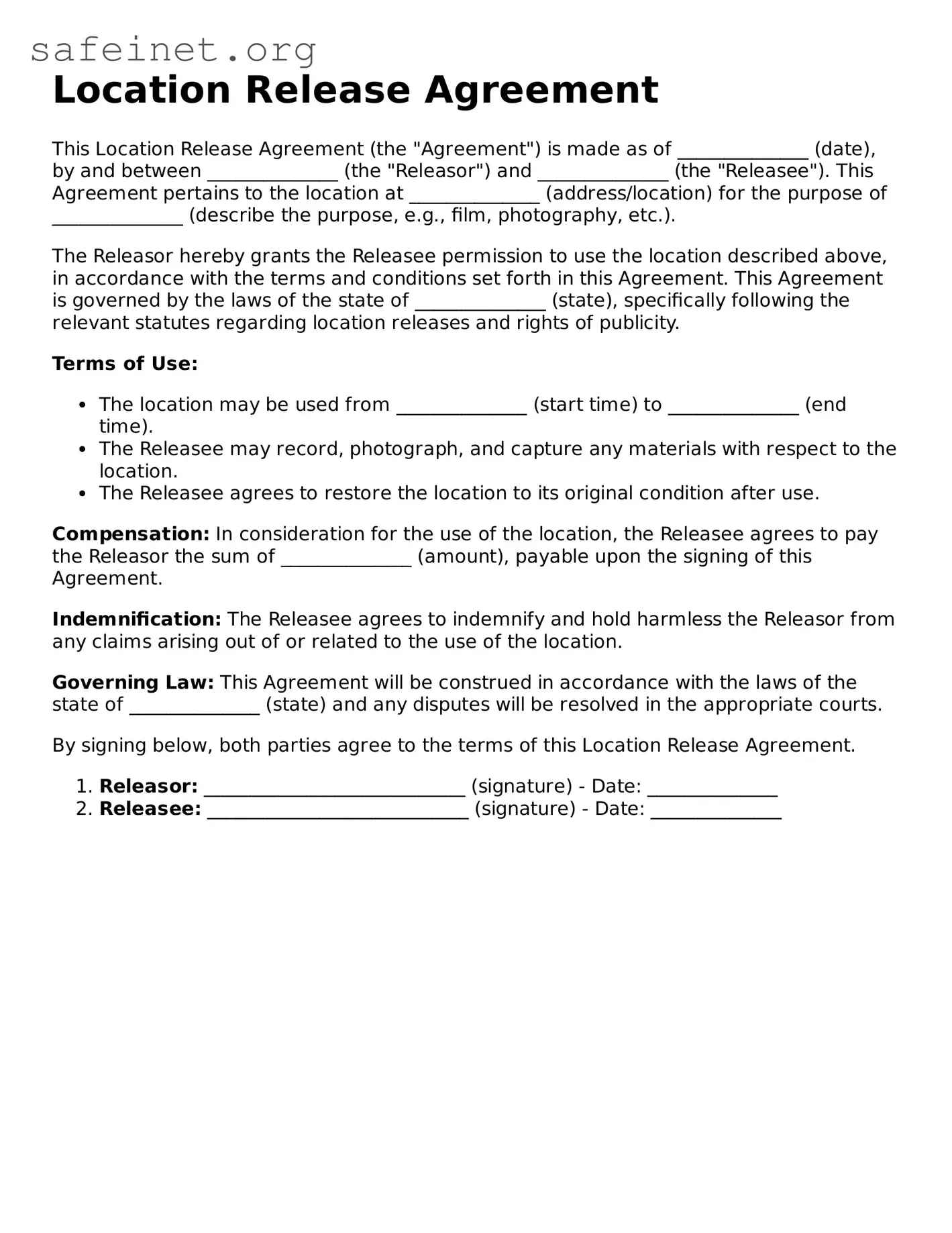What is a Location Release form?
A Location Release form is a legal document that grants permission from a property owner to filmmakers or production companies to use a specified location for filming. This form protects both parties by outlining the terms of use, addressing liabilities, and ensuring that all parties understand their rights and responsibilities related to the filming.
Why is a Location Release form necessary?
This form is important because it helps to prevent potential disputes over the use of a property. Without it, filmmakers may face legal challenges from property owners who feel their rights are violated. A Location Release also serves as proof that the filmmaker has received permission, which can be crucial for insurance purposes and in case of any claims or damages.
Who needs to sign the Location Release form?
The property owner or an authorized representative must sign the Location Release form. If the location is leased, tenants may also need to obtain permission from the landlord or property owner, ensuring all necessary parties agree to the filming.
What should be included in a Location Release form?
A comprehensive Location Release form should include essential details such as the name and contact information of the property owner, a description of the location, the duration of use, any compensation agreed upon, and specific terms regarding the allowed activities. It may also state who will be responsible for damages, insurance requirements, and any restrictions on the filming.
Can a Location Release form be revoked?
Usually, a Location Release form cannot be revoked once signed, except under specific circumstances outlined in the contract. If either party fails to meet the agreed terms, the other party may have grounds to terminate the agreement. It is vital to review the conditions set forth in the release to understand how disputes can be handled.
What happens if filming takes place without a Location Release form?
If filming occurs without a signed Location Release form, the filmmakers could face legal action for trespassing or copyright infringement. Property owners could file for damages and may seek to halt the production. Filmmakers might also struggle to secure insurance coverage if a release is not in place.
Is there a standard template for a Location Release form?
While various templates exist, it’s best to tailor a Location Release form to your specific needs. Consider consulting with a legal professional to create one that addresses all relevant factors for the intended project and location. This can help ensure that all legal bases are covered and that all parties are protected.
Do I need a lawyer to draft a Location Release form?
While it is possible to create a Location Release form without a lawyer using templates, consulting a legal expert is advisable. A lawyer can ensure that the form complies with local laws and adequately protects your interests. This step is especially important for larger projects or those involving significant financial investment.
